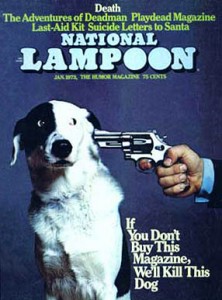 Tell people that air pollution causes asthma in one in four children in central Harlem and the Bronx or tell them that global warming may cause millions of children to die of dysentery and the best you’ll get may well be a shrug.
Tell people that air pollution causes asthma in one in four children in central Harlem and the Bronx or tell them that global warming may cause millions of children to die of dysentery and the best you’ll get may well be a shrug.
Show them a child who has collapsed on the street and is struggling for breath, on the other hand, and it would be a rare passerby who wouldn’t move heaven and earth to save the child.
The problem with promoting the environmental message is not that people aren’t caring. It’s that people care most about things they can see and hear—things that have proximity. They care about things they are connected to. And they care about things they feel they have power over (marketing guru Seth Godin made the point with the National Lampoon magazine cover to the right–wanna save the dog?).
The question is, how do we get people to feel they are connected to the kids with asthma or the kids who will suffer disease because of climate change? How do we get people to see that they have the power to help?
It’s the biggest marketing problem in history.
One person who solved a similar but much smaller problem was the Brit Mark Glover, whose organization, Lynx, almost single-handedly turned fur coats from a symbol of status to a symbol of cruelty.
But what is really important is the then-highly controversial way he went about it. He made it clear to consumers that they personally shared in the cruelty—he gave them proximity—and let them know they had, not only the power to stop the cruelty, but the responsibility.
His methods were shocking. Watch the ad below, and make sure you get to the message at the very end (If you read the blog on email, you can watch by clicking here). You may not like it. You may find it distasteful and even sexist.
But, as we all try to figure out how to get people connected to our environmental problems, bear this one thing in mind: it worked.